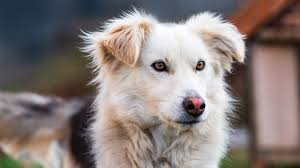The African dog, often referring to the African faut il euthanasier un chien qui a mordu wild dog or painted wolf (Lycaon pictus), is a fascinating and unique member of the canid family. Known for its social structure, remarkable hunting strategies, and distinct appearance, this animal stands out as one of Africa’s most captivating wildlife species.
Physical Characteristics: A Painted Wonder
One of the most defining features of the African wild dog is its striking coat. Unlike domestic dogs, which may exhibit various shades of solid colors, the African wild dog is known for its irregular, mottled fur pattern. The combination of patches of black, white, and tan creates a “painted” appearance, which is where it gets its other common name, “painted wolf.” The coloration helps the wild dog blend into its natural environment of African savannas and woodlands, providing effective camouflage while hunting.
Another notable feature is its large, rounded ears, which are highly sensitive and help the dog with communication and detecting prey. These ears, along with the dog’s slender and athletic build, make it highly efficient at long-distance running. Adult wild dogs typically weigh between 18 to 36 kg (40 to 80 pounds), with males usually being slightly larger than females.
Social Structure: A Complex Society
Unlike many other canid species, African wild dogs live in highly social packs. These packs can range in size from 2 to 27 individuals, with an average size of about 5 to 10. The pack is structured with a clear hierarchy, led by an alpha male and female. These dominant pairs are the primary breeders, with the rest of the group helping in raising the pups. This cooperative breeding system ensures the survival of the species, as the entire pack works together to support the pups.
The social bonds within a pack are incredibly strong, and members engage in frequent grooming, play, and vocalizations to maintain cohesion. One of the most fascinating behaviors is the sharing of food. After a successful hunt, the pack typically regurgitates food for the younger and weaker members, showcasing a high degree of communal care.
Hunting and Diet: Master Strategists
African wild dogs are exceptional hunters and are known for their stamina and strategy. Unlike lions or leopards that rely on power or stealth, wild dogs employ a team-based approach to hunting. They often target medium-sized herbivores like impalas, gazelles, and springboks. The pack works together, coordinating their movements to chase prey for long distances, exhausting the animals and ensuring that no single individual overexerts itself.
Hunting usually happens in the early morning or late afternoon when temperatures are cooler. A successful hunt is a group effort, requiring synchronized coordination and precise timing. This communal method has earned them the reputation of being one of the most efficient predators in Africa, with a success rate in hunting that often exceeds 70%, one of the highest in the animal kingdom.
Conservation Status: A Species in Peril
The African wild dog is classified as endangered by the International Union for Conservation of Nature (IUCN), with only an estimated 6,000 individuals remaining in the wild. Their populations are severely threatened by habitat loss, human-wildlife conflict, and diseases such as rabies and distemper, which are spread by domestic dogs. The increasing fragmentation of their habitat also poses a significant threat, as it limits their access to sufficient hunting grounds and increases the risk of inbreeding.
Efforts to protect the African wild dog are underway in various parts of Africa. Conservation organizations are working to secure wildlife corridors, reduce human-wildlife conflict, and vaccinate domestic dogs to reduce the risk of disease transmission. Several protected areas, including Kruger National Park in South Africa and Hwange National Park in Zimbabwe, are home to substantial populations of wild dogs and are focal points for their conservation.
Cultural Significance and Perception
In many African cultures, the African wild dog is often misunderstood and feared due to its predatory nature and reputation as a “killer.” However, it also has significant cultural value in some regions. In certain African traditions, the wild dog is seen as a symbol of loyalty, teamwork, and resourcefulness. In some indigenous beliefs, the animal is revered for its hunting prowess and its ability to work as a collective unit.
Interestingly, the African wild dog is also associated with certain myths and legends. In some cultures, it is said to possess a supernatural ability to transform, representing both a symbol of the untamed wilderness and a mysterious figure in the human imagination.
Conclusion: A Remarkable Species
The African wild dog is a creature that embodies the wonders of Africa’s wild landscapes. With its stunning coat, complex social structure, and exceptional hunting skills, it has carved out a unique place in the ecosystem. However, the ongoing threats to its survival highlight the urgency of conservation efforts to protect this extraordinary animal. By ensuring the survival of the African wild dog, we not only preserve a key predator in the African ecosystem but also safeguard a species that has much to teach us about cooperation, resilience, and the delicate balance of nature.

